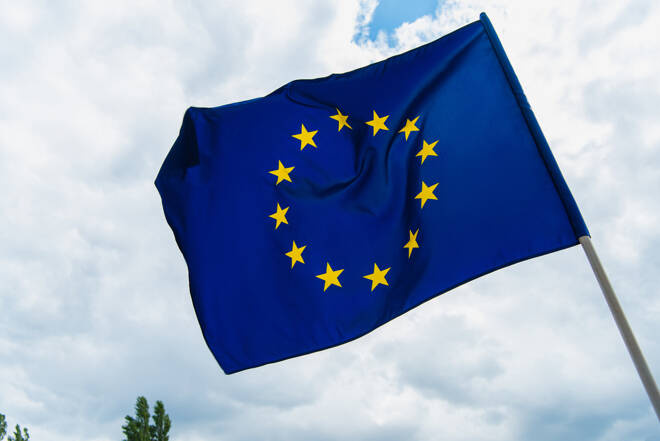Advertisement
Advertisement
Euro Area Private Sector Sees Growth Accelerate in February
By:
While service sector activity accelerated in February, the manufacturing sector continued to contract despite return to output growth.
In this article:
It was a busy morning on the Eurozone economic calendar, with member state and Eurozone private sector PMI numbers in the spotlight. With the markets expecting a 50-basis point ECB rate hike in March, the PMI numbers and sub-components needed to reflect sticky inflation and an improving macroeconomic environment to support the ECB hawks.
Member state PMI numbers set the tone, reflecting improving euro area private sector conditions.
According to prelim figures, the French Manufacturing PMI slid from 50.5 to 47.9 versus a forecasted 50.8. The services PMI rose from 49.4 to 52.8, versus a forecasted 49.9.
Germany’s private sector followed a similar trend. The manufacturing PMI fell from 47.3 to 46.5, while the services PMI increased from 50.7 to 51.3%. Economists forecast PMIs of 48.0 and 51.0, respectively.
Euro Area Private Sector Sees Pickup in Activity
As a result of the contractions across the French and German Manufacturing sectors, the Eurozone Manufacturing PMI fell from 48.8 to 48.5 versus a forecasted 49.3. The services sector delivered much-needed support, with the PMI rising from 50.8 to 53.0. Economists forecast a services PMI of 51.0.
The Eurozone Composite PMI increased from 50.3 to a nine-month high of 52.3. Economists forecast a Composite PMI of 50.6. According to the Eurozone Composite PMI survey,
- Despite the weaker manufacturing sector PMI, manufacturing output returned to growth. The Manufacturing Output Index rose from 48.9 to a nine-month high of 50.4.
- However, the service sector led the way, expanding for a second consecutive month.
- Service sector business activity recorded the most marked expansion since June 2022.
- Germany and France saw their respective private sectors return to growth.
- New orders across the euro area increased for the first time since May 2022, fueled by a sharp increase in demand for services.
- Manufacturing firms reported improving supply chain conditions, supporting output growth.
- Input prices rose modestly in February and at the slowest pace since September 2020.
- However, average prices charged for goods and services continued to increase at a marked pace.
- Firms looked to pass on higher costs, including rising staffing costs.
- Improving private sector conditions supported a pickup in hiring, with optimism about the year ahead increasing to a one-year high.
While service sector activity continued to support the euro area economy, the ECB doves will likely be concerned with manufacturing sector conditions. This week, markets bets of a sharp economic rebound in China also eased, which could test the ECB’s more optimistic economic outlook.
EUR/USD Responds to the Eurozone Composite PMI
Ahead of the PMI numbers, the EUR/USD rose to a high of $1.06852 before falling to a low of $1.06601.
However, in response to the PMI numbers, the EUR/USD rose to a high of $1.06884 before falling to a low of $1.06594.
The EUR/USD was down 0.18% to $1.06657, at the time of writing.
Next Up
After last week’s stats and today’s PMI numbers, investors need to consider ECB member speeches. However, with no Executive board members on the calendar to speak, commentary with the media will need monitoring. ECB members will need to discuss post-March moves to draw interest.
It is a relatively busy day on the US economic calendar, with prelim February private sector PMI numbers in the spotlight.
We saw a divergence between the Markit and ISM survey-based numbers in January. The more influential ISM Non-Manufacturing PMI rose from 49.2 to 55.2 versus a Markit survey-based PMI that rose from 44.7 to 46.8 to reflect a continued contraction in the services sector.
While manufacturing sector activity will draw interest, service sector activity accounts for more than two-thirds of the US economy, giving the Services PMI a greater weighting. Economists forecast the Services PMI to increase from 46.8 to 47.1.
However, we expect the markets to look beyond the headline figures. Input and output cost inflation, new orders, and labor market conditions are likely areas of interest.
About the Author
Bob Masonauthor
With over 20 years of experience in the finance industry, Bob has been managing regional teams across Europe and Asia and focusing on analytics across both corporate and financial institutions. Currently he is covering developments relating to the financial markets, including currencies, commodities, alternative asset classes, and global equities.
Latest news and analysis
Advertisement
